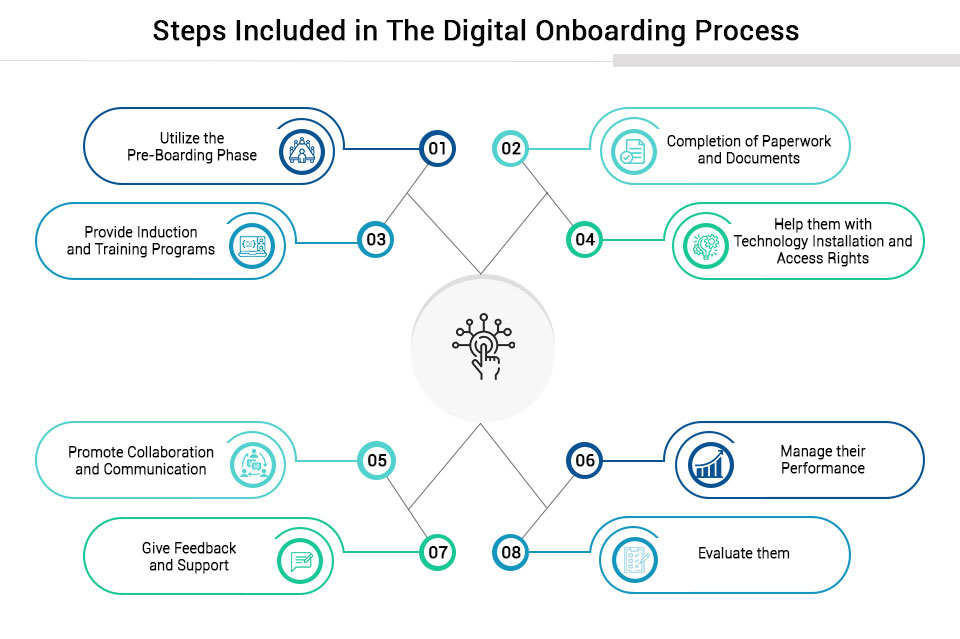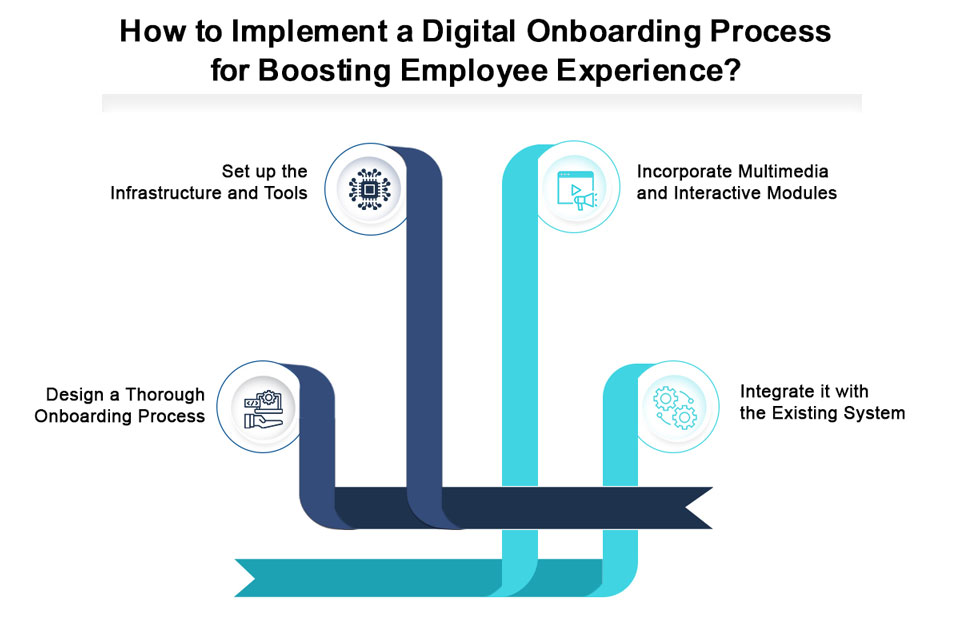
A positive employee onboarding experience plays a crucial role in setting the stage for long-term success and engagement within an organization. In today's digital era, traditional onboarding methods are being replaced by more efficient and effective digital onboarding processes. By leveraging technology, the future of HR holds great potential for transforming the onboarding process into a seamless and impactful journey, enhancing the employee experience, and fostering a strong foundation for employee satisfaction and productivity.
Employee onboarding encompasses the activities and processes that occur from the moment a new employee enters through the door until they become fully integrated into their role. Traditional onboarding methods often face challenges such as paperwork delays, information overload, and lack of personalization. However, by using digital onboarding, these problems can be overcome effectively.
Digital onboarding is the process of automating and digitizing the employee onboarding process with the use of technology. It has many benefits, such as it gives greater accuracy, better efficiency, and enhanced communication. Key components of a successful digital onboarding process include creating a structured plan, utilizing technology tools, and fostering a positive employee experience.
Several HR managers believe that employee onboarding starts only on the new hires’ first day of work. However, employers aiming for optimal onboarding outcomes understand that the process should commence as soon as the candidate accepts the job offer. These are the essential steps you should follow in the digital onboarding process to boost your employee's experience.

Implementing a digital onboarding process provides numerous benefits for both employees and the HR team:
To boost employee experience, HR managers should follow a few essential steps to implement an effective digital onboarding process in their organization.

By adopting digital onboarding processes, HR leaders can boost their employee experience and create a strong foundation for success. The benefits of digital onboarding, like increased engagement, time and cost efficiency, improved accuracy, and streamlined communication, are irreplaceable in today's quickly changing workspace. By implementing the above steps and changing their manual onboarding process to a digital one, organizations can create a seamless and engaging onboarding experience for their employees, which sets the stage for long-term employee satisfaction and productivity.
Q. What is the digital onboarding process in HR?
A. The digital onboarding process in HR leverages technology to enhance efficiency, improve the employee experience, and set a positive foundation for new employees. By digitizing paperwork, providing online training modules, utilizing communication tools, and tracking performance, organizations can create a seamless onboarding journey that fosters engagement and sets new employees up for success.
Q. Why is digital onboarding important?
A. The key advantages of digital onboarding are that it saves time and money while enhancing client happiness and engagement. Organization no longer needs to print documentation or make protracted phone calls to complete the onboarding process because everything can be done digitally in a matter of minutes.
Q. What are the types of employee onboarding process?
A. There are several types of employee onboarding processes that organizations can adopt, depending on their specific needs and goals. Here are some common types of onboarding processes:
Q. What are the best practices of digital onboarding process?
A. Implementing best practices in the digital onboarding process is crucial for ensuring a smooth and effective transition for new employees. Here are some key best practices to follow:
Q. What is the risk of digital onboarding?
A. While digital onboarding offers significant advantages, organizations must proactively address these risks to ensure a secure and successful onboarding experience. Implementing robust data security measures, establishing backup systems, providing adequate training and support, and fostering human connection alongside digital processes can help mitigate these risks and maximize the benefits of digital onboarding.

CredBadge™ is a proprietary, secure, digital badging platform that provides for seamless authentication and verification of credentials across digital media worldwide.
CredBadge™ powered credentials ensure that professionals can showcase and verify their qualifications and credentials across all digital platforms, and at any time, across the planet.

Please enter the License Number/Unique Credential Code of the certificant. Results will be displayed if the person holds an active credential from TMI.